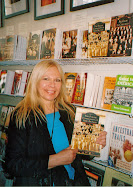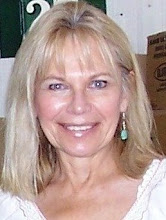Generations of ancestors surround me while I work on my family history this winter. Some are on the floor, or inside two new storage ottomans, or next to me on the couch in the living room. Others are on the dining room table. Many more are upstairs in my office. They are on index cards, in pages of notes, in file folders, and in three-ring binders. A select few have made safe passage to a new database on my laptop.
I am devoting as much time as possible these days to genealogy—specifically, my own Polish ancestors. The French Canadians, Swedes, Scots, and Revolutionary War era Americans who occupy the paternal side of my children's family tree are on hold for the foreseeable future.
In 2010, I expanded my family research to include DNA testing, a variety of heretofore-untapped databases, and some much-needed background reading on Polish history. This new input has led me to re-examine what I knew, or thought I knew, from my past 15 years of research. A couple of DNA tests, a handful of new records, and suddenly the earlier generations of my family are shifting into new configurations, introducing new surnames, and living in parishes outside the pale of my past explorations.
All this reorganization and reassessment takes a lot of time, and a lot of thought. I fall asleep at night wondering about my ancestors. Where did Anna Mosiejko's family live? (Not in Szczuczyn parish where her own children were later baptized, and not in any of the surrounding parishes I usually search, so maybe Kamionka or Ostryna?) Is that szlachta Prokopowicz clan in Lack parish related to my maternal peasant Prokopowicz family nearby in Iszczolna? Why were my paternal Prokopowiczes baptized, married, and buried from at least five different parishes when they lived in the same village, Poleckiszki, for a couple hundred years? The marriages are understandable (couples were usually married in the brides' parishes, not the grooms'), but the other events puzzle me.
Celebrating individuals through index cards
Each one of my ancestors is an individual unique in their particular combination of physical appearance, personality traits, talents, and life experiences. All I know of them, however, is when they were born, baptized, married, had children, and died (from "fever," more often than not). The most direct observation I have of any one of them is when I view and print out the documents of such life passages.
Curiously, these long-ago family members come to life for me on the index cards I use for extracting the important details from their vital records. There is something compelling about creating a card for each event and paper-clipping all those cards together. Is it the act of writing that ancestor's name, or of physically handling the index cards? Holding the pen, touching the paper—this is a tactile process, my own little celebration of an ancestor's individuality. Typing the same information into a computer simply does not give me this same feeling of closeness and connection. The electronic database is handy and useful, of course. Just not emotionally satisfying.
Even more gratifying is my ceremony of laying out all the index cards potentially connected to a particular ancestral line. As I study them, patterns emerge. I shift the cards around to form family groups. Even the minor cast members here play a part in the drama; persons repeatedly serving as godparents or marriage witnesses tantalize with clues to other relationships waiting to be revealed.
Baptismal records from the 1700s and early 1800s typically omit the mother's maiden name. The parents may be identified, for example, as "Michal Rusc and Rozalia." But over the years, one Hayduk or another serves as a godparent for this couple's children. Perhaps Rozalia is a Hayduk? More research will tell, either through the eventual discovery of the couple's marriage record, or through baptisms of children born a decade or so later, when mothers' maiden names became part of the church record.
Genealogy software might generate the same kinds of clues about possible relationships. But would seeing these connections in Arial 10 point on a computer screen make me as happy as moving index cards around, identifying a new family group, and setting them together on their own corner of the dining room table as if I were building them their own little house? For me, the answer is obviously no. This is one aspect of genealogical research in which I am unabashedly old-school and loving it.
Subscribe to:
Post Comments (Atom)









Barbara,
ReplyDeleteI'm happy you are back blogging. I respect your work so much and look forward to reading (and learning from) the results of your research.
I received the Ancestor Approved award in December and would like to pass it on to you. You may pick up the award at http://heritagezen.blogspot.com/2011/01/ancestor-approved-award.html.
I am not worthy... ;)
Regards,
Cynthia
Cynthia, dziekuje bardzo! I'm honored to receive the Ancestor Approved award and pass it on. Coming from you, it's especially meaningful because of our shared Polish Worcester heritage. And the idea of passing it along is wonderful. I'll post about this soon.
ReplyDelete